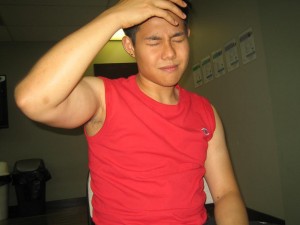Overview
A high temperature is always known as fever. Generally, over 37.5°C in children is alluded to as a fever.
It is usually uncomfortable and worrying as a progenitor when your kid is having high temperatures though it is normal and it does disappear at its own time.
Monitoring your child’s temperature using a thermometer can be a very quick and simple way to know if your child is having a fever.

Causes of High Temperatures
High temperatures are occasionally triggered by different infections. Having a fever always aid the body to fight illness by provoking the body’s natural defense or rather the immune system.
An increase in the body temperature makes it hard for the bacteria and viruses to survive. Certain conditions may be accompanied by a fever. These are:
- Kidney infections
- Flu
- Ordinary childhood illness such as mumps, whooping cough, measles, and chickenpox
- Tonsillitis
- Roseola
- Ear infections
Children’s temperature can also rise during teething, just after vaccinations and when covered with excess beddings and clothing.
When is it Urgent Medical Advice Needed?
One should contact his or her GP or health attendant when your child is:
- Past six months and still shows symptoms of being unwell for real stance drowsy and floppy and you feel concerned about it.
- Beneath the age of three months and has high temperatures of 38°C and above.
- Between the three and six months and has high temperature of 39°C and above
Treatment of Fever
It is vital to ensure your child is hydrated when he or she is having a high fever. This is done by ensuring that you give your child a lot of cool water even if the child isn’t thirsty. By doing so, the child’s body will be able to maintain the fluid levels.
Childs temperature can be reduced by also doing the following:
- Maintaining their room cool-18°C (65°F) is normally considered good and can be done by opening the windows if necessary
- Keeping them cool- this can be done by undressing them
- When the child is in distress, give him or her ibuprofen or Paracetamol–this can’t be given simultaneously but if one of them doesn’t work as desired then consider trying the other one(take a habit of reading patients details in order to know the correct dose and the frequency for your child’s age)
More Serious Illnesses
More serious signs are always accompanied by high temperatures in children. This are:
- Rashes
- Seizures
- Breathlessness
- vomiting
Related Video On Fever
